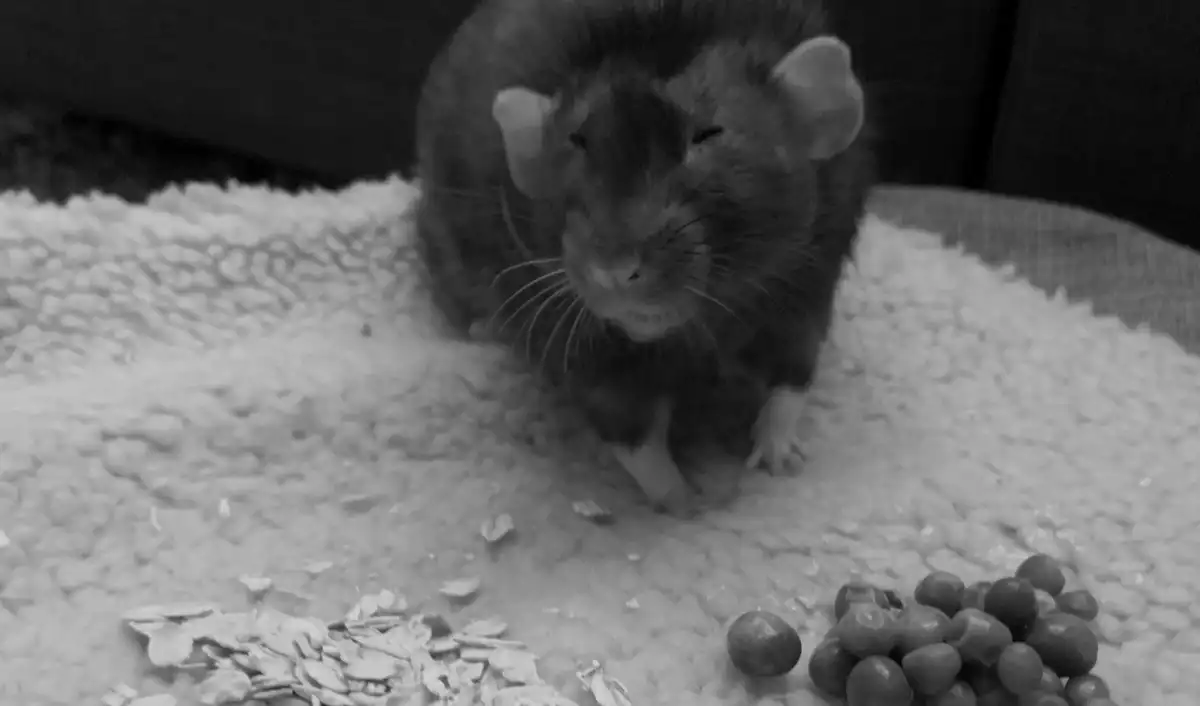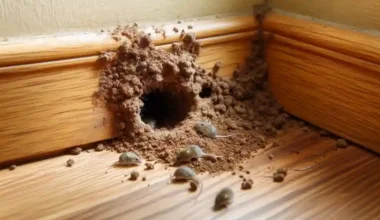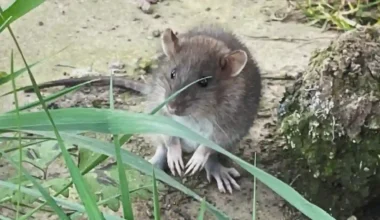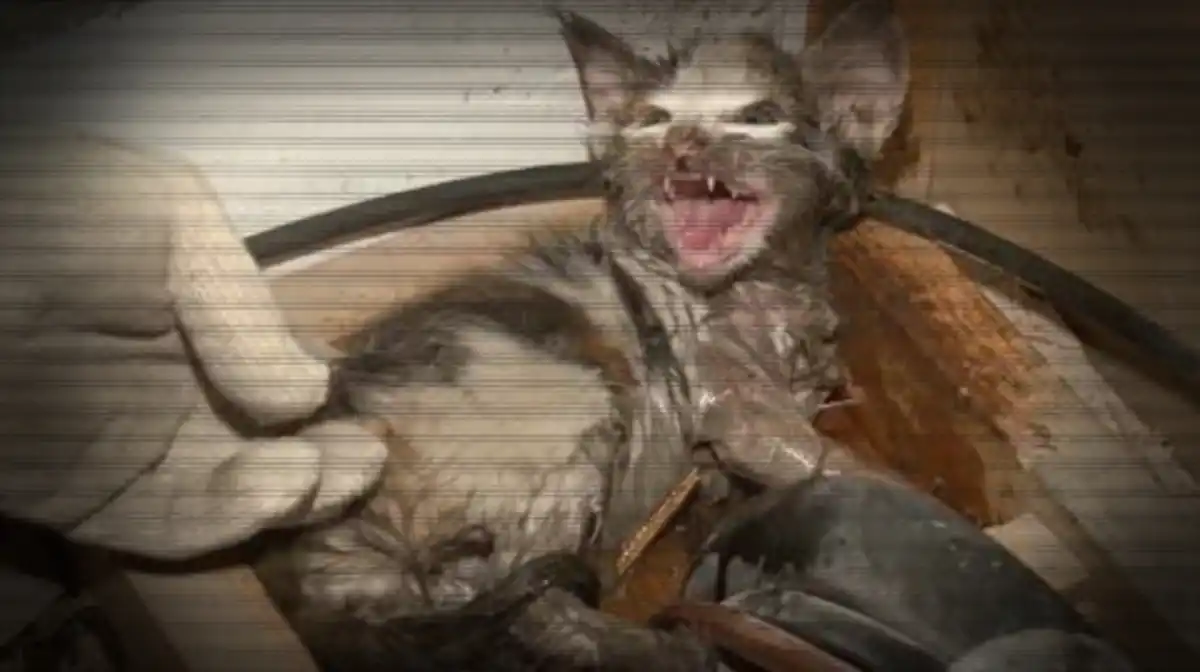A pair of rats can generate up to 482,508,800 offspring within 3 years if left unchecked.¹ This alarming reproductive capacity implies that even a small number of rats near your chicken coop can rapidly escalate into a full-blown rat infestation if not addressed. Moreover, rats are notorious carriers of diseases, including fleas, mites, plague, and salmonella—this compromises the safety of your livestock. Thus, you want to keep rats out of chicken coop.
Meanwhile, rats are nocturnal. If you encounter them in daylight, it indicates a significant issue. You either have an infestation or they are famished and driven to extreme measures to acquire food. Also, these critters can fit through gaps as narrow as approximately a 20 mm hole.² Some rats can even maneuver through the openings in chicken wire. Due to their squeezing capability and chewing tendencies, relying solely on chicken wire is not an optimal defense. Unless you have a considerably tall fence with minuscule gaps, rats can easily pass through the wire or even leap over the fence.
How to keep rats out of chicken coop
1. Take your preventive measures seriously
The thumb rule is prevention. Preventive measures are more effective than dealing with the consequences later on. Therefore, you should prioritize good husbandry practices to maintain a clean and secure coop. That will ensure the safety and health of your flock.
However, you need to stay vigilant regardless of how secure your coop may appear. Whether you reside in a rural or urban setting, never assume that you are immune to vermin-related issues.
Rats prefer to reside and hide in cluttered areas. The solution is to elevate everything off the ground. You could also use shelves or hang items from walls, making it less appealing for rats to find a home in those spaces.
You generally want to maintain a well-groomed appearance by keeping the grass surrounding your coop neatly trimmed. Remove any scrap timber or large shrubs close to the area. Avoid accumulating empty feed bags outside the door; either discard them properly or store them for future use.
2. Don’t litter feed around
In a typical chicken run, the primary attractions for rats are chicken feed and chicken droppings. So, the goal is to create an unfriendly environment to force them to seek shelter elsewhere.
Rats have a highly adaptable diet and can eat virtually anything within their reach. This includes your garden vegetables and livestock. They pose a threat to baby chicks, as they are known to kill and eat them. In moments of desperation, rats may even resort to attacking mature chickens.³
Rats are attracted to easily accessible meals, and leaving grain scattered around means offering them an open buffet. The solution is to clean up any grain spills caused by your hens during the day before nightfall.
Also, store chicken feed in a covered metal container. Best choices include heavy, industrial drums that have been meticulously cleaned to prevent rodent infiltration. The container cover should fit tightly because rats can scale walls to access the feed through any gaps.
Water sources also invite them to your chicken coop. To keep rats out of chicken coop, remove water and feed trays from the coop. Place them back in the coop first thing in the morning for your hens. Alternatively, purchase a treadle feeder.
3. Don’t abandon eggs in the coop overnight
Keep rats out of chicken coop by removing the eggs from the coop every day. Avoid leaving any eggs in the coop overnight. Regarding the small chicks, keep them indoors during the night. Rats, in their desperate search for food, can kill and eat your baby chicks. For safety, house your chicks indoors during the night, as rats tend to be most active during this time.
4. Set up rat traps
While traditional snap traps can catch rats, keep them away from your chickens. Alternatively, you can opt for our mouse snap traps and humane catchers such as buck rat traps, which are designed to be safe for your flock.
Rats tend to walk along walls, so position traps or stations in this expected path. You can set humane traps around your chicken coop’s perimeter.
When setting the traps for the first time, leave them in place for several days without bait, allowing the rodents to become accustomed to their presence. Rats are cautious animals and are unlikely to approach something unfamiliar and unknown. Wear gloves when placing traps—you do not want your scent stuck on them—that can become a signal for rats to navigate around the trap.
Don’t use glue traps under any circumstances. This method is widely considered to be the most inhumane way to deal with pests. Furthermore, glue traps often result in the unintended killing of non-target wildlife, making them highly detrimental to the ecosystem.
5. Be careful about applying rat poisons
Only consider poisons as a last resort to keep rats out of chicken coop. During the application, you have to exercise caution, especially if you are applying them near your livestock or poultry.
Unfortunately, poison for eliminating rats from chicken coops may result in unintended consequences such as hurting other wildlife if not applied with care. For instance, on Marco Island alone, more than 20 birds of prey have been found dead or extremely ill due to suspected rodenticide.⁴
Apart from another animal directly eating the poison, a poisoned dead rat in an exposed area, could be eaten by your chickens, cats, dogs, or local wildlife. This consumption indirectly exposes the non-target animal to the poison.
Therefore, poisoning rats to keep them off your coop can potentially harm other animals. So, think carefully about it and make sure to take proactive measures such as promptly removing any dead rodents as soon as you find them.
Regrettably, there are circumstances where bait becomes necessary, considering that rats have a rapid reproductive rate.
If you have to use poison, only use secure bait stations. Ensure that the stations are securely locked to prevent unauthorized access. Many bait stations feature mechanisms such as snap closures that require a specific tool to open, while others can be locked using screws or similar fasteners. This practice ensures that the contents of the bait stations remain inaccessible to unintended animals.
You could always use poison blocks instead of pellets due to their ability to be securely fastened inside the bait station. Rodents find it harder to dislodge them. Pellets, on the other hand, can be easily removed from the containers.
6. Contact your local pest control professional
If you have exhausted all your options and continue to get rat visits to your chicken coop, don’t waste any more time seeking professional assistance. Pest professionals will use superior bait and traps placed in optimal locations to tackle the rat problem.
Read also: feeding birds without attracting rats
Conclusion
Truly, the most effective method is to prevent rat entry in the first place. Always allocate a few minutes each day to clean up any spilled feed, store the feed in containers resistant to rodents, and make it as tougher for the critters to break into your coop.
Read also: trick to end roof rats in a Florida home
- Planet of the RATS: Interactive graphic reveals how one pair of rats could produce half a BILLION descendants in just three years if left unchecked. Mail Online Science
- Rats and mice – unwanted house guests! Anticimex
- Is There a Correlation Between Rodents and Backyard Chickens? Utah State University
- Collier County animals dying from rat poison. NBC 2 News
Read also: DIY rat poison with toothpaste






